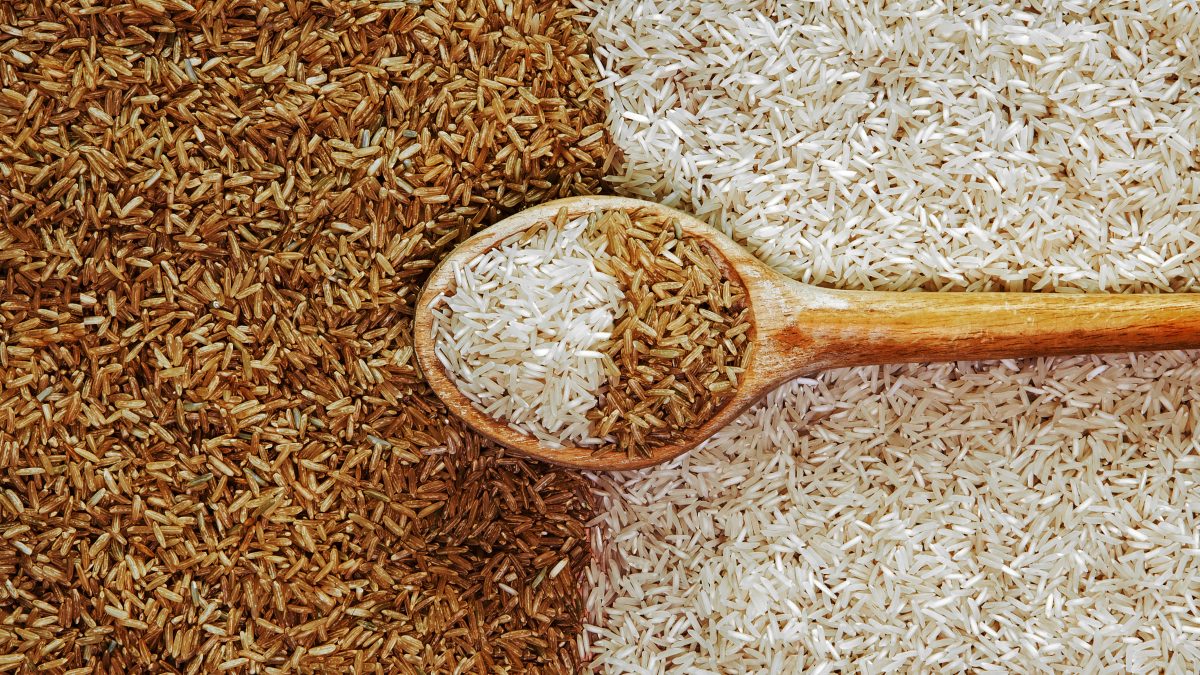Rice and Diabetes Risk
In 2012, a meta-analysis was published tying white rice consumption to diabetes, especially in Asian countries. Even in the United States, where we eat much less white rice, research shows the regular consumption of white rice was associated with higher risk of type 2 diabetes though brown rice was associated with lower risk, and that was after controlling for other lifestyle and dietary factors such as smoking, exercise, and meat, fruit, and vegetable consumption. The researchers estimated that replacing even just a third of a serving per day of white rice with the same amount of brown rice might lower diabetes risk by 16 percent.
Since the publication of that 2012 meta-analysis, a study out of Spain suggested white rice consumption was associated with decreased diabetes risk. However, it was a tiny study compared to the others, with only hundreds in contrast to hundreds of thousands of people involved. In Spain, rice is usually consumed in paella, which is commonly prepared with the spice saffron that research indicates may have therapeutic potential against diabetes. Additionally in Spain, white rice consumers also ate more beans, which appear to have antidiabetic properties, as well. This gives a sense of how difficult it is to infer cause-and-effect relationships from population studies, since we can’t control for everything. Yes, we can control for weight, smoking, alcohol, exercise, and so on, but maybe people who are smart enough to eat brown rice are also smart enough to wear seatbelts and bike helmets, install smoke detectors, and forgo bungee jumping. What we need is a way to fund randomized interventional studies, where we switch people from white rice to brown rice and see what happens. “Until then, the effect of the consumption of white rice on the development of type 2 diabetes will remain unclear.” But we didn’t have such studies…until now.
White vs. Brown For Weight Loss
As I show in my video Is It Worth Switching from White Rice to Brown?, researchers conducted a study in which overweight women were randomized into two groups: one following a weight-loss diet with a cup or so of cooked white rice every day and another with a cup of cooked brown rice every day. After six weeks, the groups switched, and the white rice group ate brown rice and vice versa. When the subjects were eating brown rice, they got significantly more weight loss, particularly around the waist and hips, lower blood pressure, and less inflammation.
Researchers found similar effects for prediabetics: Substituting brown rice for white rice led to significantly more weight loss, more waist loss, and better blood pressures.
The Effects on Arteries
Brown rice may not just help get rid of tummy fat, but also preserve our artery function. High blood sugars can stiffen our arteries, cutting in half their ability to relax within an hour, whether you’re diabetic, have prediabetes, or are nondiabetic. For diabetics, though, their arterial function goes down and stays down. We also know that brown rice can have blood sugar lowering effects compared to white rice. So, can switching to brown rice help preserve arterial function? In folks with metabolic syndrome, within an hour of eating about a cup of cooked white rice, we can get a drop in arterial function, but not so with brown rice.
Despite all the benefits of whole grain rice, Asian people often prefer white rice, considering it softer and tastier than brown rice. In a focus group of Chinese adults, however, researchers found that only a minority of them had ever even tried brown rice. “Before tasting brown rice, the majority of participants considered it to be inferior to white rice in terms of taste and quality…” So, the researchers simply served some up, and, after actually tasting it and learning about it, most changed their minds.
For more information on research on white rice consumption in China, check out my video If White Rice Is Linked to Diabetes, What About China?.
If brown is good, then what about all the even more colorful varieties? See Brown, Black, Purple and Red (Unlike White on) Rice
For another interventional trial with whole grains, check out Whole Grains May Work as Well as Drugs.
What about the so-called rice diet? See:
- Kempner Rice Diet: Whipping Us Into Shape
- Drugs and the Demise of the Rice Diet
- Can Diabetic Retinopathy Be Reversed?
- High Blood Pressure May Be a Choice
How could the simple difference between whole and refined grains make such a difference? For a clue, see my video Gut Dysbiosis: Starving Our Microbial Self.
Arsenic in rice? I did a deep-dive into this issue and produced an entire video series. Check it out to learn more.
And for more on the paella spice saffron, see:
- Saffron vs. Prozac
- Saffron for the Treatment of PMS
- Saffron for the Treatment of Alzheimer’s
- Saffron for Erectile Dysfunction
- Saffron vs. Memantine (Namenda) for Alzheimer’s
In health,
Michael Greger, M.D.
PS: If you haven’t yet, you can subscribe to my free videos here and watch my live, year-in-review presentations:
- 2012: Uprooting the Leading Causes of Death
- 2013: More Than an Apple a Day
- 2014: From Table to Able: Combating Disabling Diseases with Food
- 2015: Food as Medicine: Preventing and Treating the Most Dreaded Diseases with Diet
- 2016: How Not To Die: The Role of Diet in Preventing, Arresting, and Reversing Our Top 15 Killers
